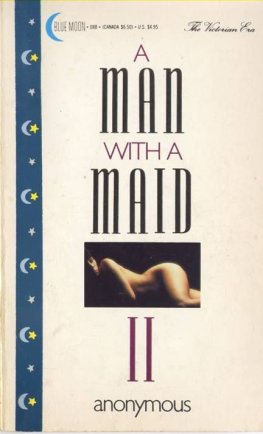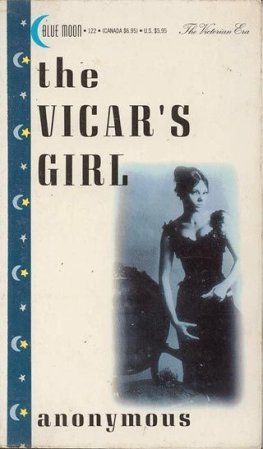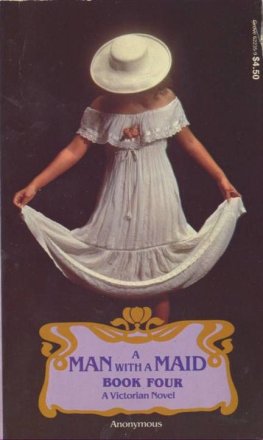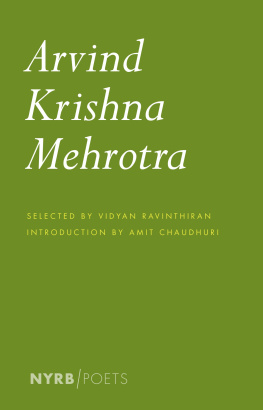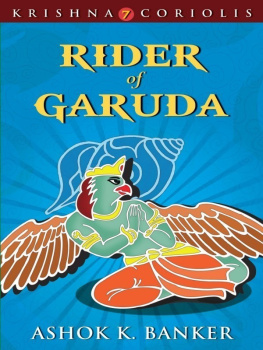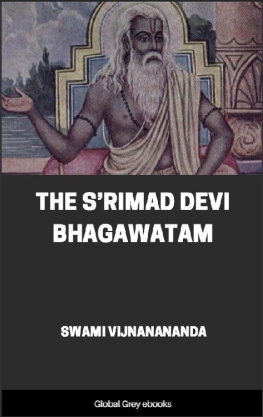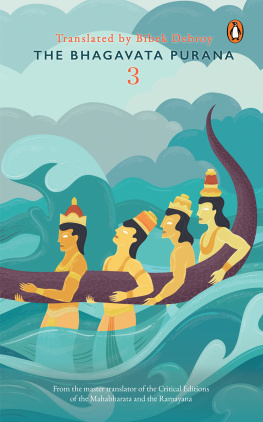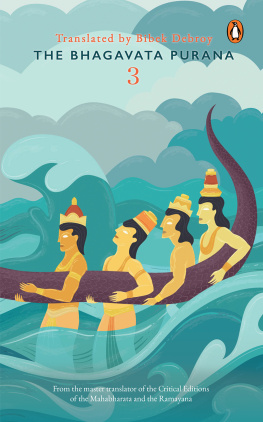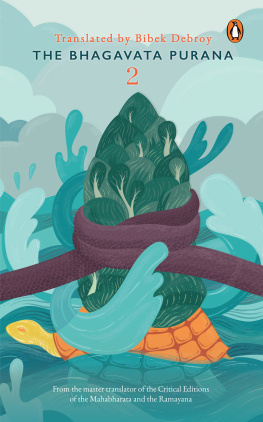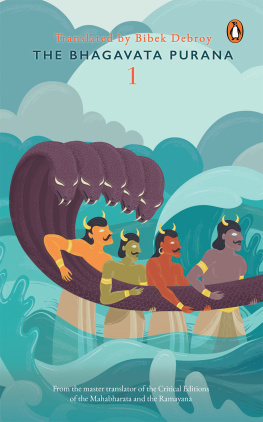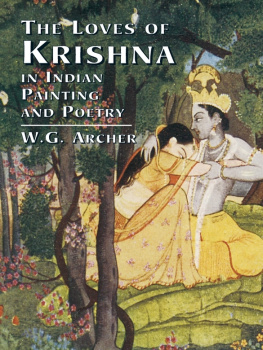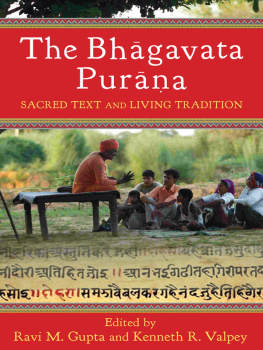
KRISHNA: THE BEAUTIFUL LEGEND OF GOD
EDWIN BRYANT graduated from Columbia University in 1997, where he taught Sanskrit and Hindi. He was the lecturer in Hinduism at Harvard University for three years, and is presently assistant professor in Hinduism at Rutgers University, New Jersey. His publications include The Quest for the Origins of Vedic Culture: the Indo-Aryan Invasion Debate (2002); The Hare Krishna Movement: The Post-Charismatic Fate of a Religious Transplant (2004); The Indo-Aryan Controversy: Evidence and Inference in Indian History (forthcoming); and Sources in the Krishna Tradition (forthcoming). He is presently working on a book, Quest for the Historical Krishna, and a translation of the Yoga Sutras.
Krishna: The Beautiful Legend of God
rmad Bhgavata Pura, Book X
With Chapters 1, 6 and 2931
from Book XI
Translated with an Introduction and Notes by
EDWIN F. BRYANT
PENGUIN BOOKS
PENGUIN BOOKS
Published by the Penguin Group
Penguin Books Ltd, 80 Strand, London WC2R 0RL, England
Penguin Group (USA) Inc., 375 Hudson Street, New York, New York 10014, USA
Penguin Books Australia Ltd, 250 Camberwell Road, Camberwell, Victoria 3124, Australia
Penguin Books Canada Ltd, 10 Alcorn Avenue, Toronto, Ontario, Canada M4V 3B2
Penguin Books India (P) Ltd, 11, Community Centre, Panchsheel Park, New Delhi 110 017, India
Penguin Group (NZ), Cnr Airborne and Rosedale Roads, Albany, Auckland 1310, New Zealand
Penguin Books (South Africa) (Pty) Ltd, 24 Sturdee Avenue, Rosebank 2196, South Africa
Penguin Books Ltd, Registered Offices: 80 Strand, London WC2R 0RL, England
www.penguin.com
This translation first published 2003
2
Copyright Edwin F. Bryant, 2003
All rights reserved
The moral right of the author has been asserted
Except in the United States of America, this book is sold subject
to the condition that it shall not, by way of trade or otherwise, be lent,
re-sold, hired out, or otherwise circulated without the publishers
prior consent in any form of binding or cover other than that in
which it is published and without a similar condition including this
condition being imposed on the subsequent purchaser
EISBN: 9780141913377
To my daughter Mohin
Contents
Krishna: The Beautiful
Legend of God
Acknowledgements
To Bhaktivednta Swmi, whose devotional rendition of the text was the first to present the Ka story and the path of Ka bhakti around the world on a popular level, and in whose works I first encountered the rmad Bhgavata Pura and the story of Ka. To the Bhaktivednta Book Trust editions padapha, word-for-word breakdown, which was particularly useful to me for this work. To the American Council of Learned Societies/Social Science Research Council/National Endowment of the Humanities International and Area Fellowship for a 20002001 research grant which allowed me to complete this translation. To my father and sister for their unending support and help in ways too numerous to mention. To Mia, for all her support, patience and encouragement, and to her and Matthew Ekstrand, for being always willing to help in matters pertaining to computer problems despite my irritability at such times. To Diana Eck for the wonderful opportunity. To Paul Sherbow, for his Sanskrit editing, and to Janet Tyrrell for transforming a clumsy literal translation into something a good deal more readable. To Satyanryaa Dsa of the Jva Institute in Vndvana for his comments on the introduction and other help. To Ekkehard Lorenz for statistical analysis and other comments. To Michael Moss, who took an independent study with me to learn Sanskrit; together we read some verses from the text.
And finally to all the bhgavatas who have preserved, transmitted and elaborated upon the beautiful story of Bhagavn Ka across the ages.
Introduction
THE BHGAVATA AS TEXT
Ka (usually anglicized as Krishna) is perhaps best known in the west as the speaker of the Bhagavad Gt, the Song of God, which is a text located within the narrative of the Mahbhrata Epic. Considered by Hindus to be the incarnation of God, Ka inaugurated the present yuga, or world age, by his departure from this world shortly after the great Mahbhrata war. Although Kas role in the Epic as statesman and friend of the five Pavas is pivotal, he is not the protagonist of the story the Epic gives little information pertaining to other aspects of his life. It is the tenth book of the rmad Bhgavata Pura, The Beautiful Legend of God, generally referred to as the Bhgavata Pura (or just the Bhgavata), that has been the principal textual source dedicated to the actual narrative of his incarnation and activities, at least over the last 1,000 years or so. among the men and women cowherds, that have been particularly relished by Hindus throughout the Indian subcontinent over the centuries.
In Vraj, Ka sported with his friends, played pranks on his neighbours, and dallied amorously with the young cowherd girls. This very personal depiction of God is the primary subject matter of the tenth book of the Bhgavata Pura. The stories of Ka in Vraj have been, and, arguably, remain one of the two most influential textual sources of religious narrative in the Hindu religious landscape, along with the stories of Rma from the Epic Rmyaa, if we are to judge on the basis of the themes that have surfaced in Hindu drama, poetry, dance, painting, song, literature, sculpture, iconography and temple worship over the last millennium and more. The popularity of the Ka of Vraj has certainly eclipsed the popularity of the Ka of the massive 100,000-verse Mahbhrata Epic, despite its Bhagavad Gt. Hawley (1979: 2023), for example, found that of 800 panels depicting Ka to have survived from the period prior to 1500 CE, only three refer with any clarity to the Bhagavad Gt:
We are given to understand that for two millennia the Gt has been Indias most influential scripture, yet it is remarkable how indifferent sculptors were to this part of Krishnas adult life instead sculptors focus on the events of his youth. The Krishna we see is the cowherdboy who was so fond of butter as a child, [and who] became such an attractive lover as a youth sculpture may at least in some respects be a more accurate index of what peoples religious commitments were all along.
T. A. Gopinath Rao (1986) has listed the nine major iconographical forms under which Ka has been worshipped in India, and seven of these relate to his childhood pastimes in Vraj; the remaining two are Ka and his consort Rukmi, the goddess of fortune, and Ka as Prthasrathi, the charioteer of Arjuna. This latter image is the only representation of Ka in the role of teacher and speaker of the Bhagavad Gt (Ka had agreed to drive Arjunas chariot and delivered the Bhagavad Gt to him on the Mahbhrata battlefield immediately prior to the war). Thus, it is the Ka of Vraj that has most particularly influenced the devotional life of India, and it is the story of this Ka that is the subject of the tenth book of the Bhgavata Pura.
The Historical Context of the Bhgavata
The Bhgavata Pura forms part of a corpus of texts known as the Puras. The word Pura, in Sanskrit, signifies that which took place previously, namely ancient lore or legend. Several Puras list the total number of Puras as eighteen, one of which is the Bhgavata. As we have them today, these Puras are a vast repository of stories about kings and royal dynasties; the gods and their devotees; sectarian theologies; traditional cosmologies; popular religious beliefs concerning pilgrimages, holy places and religious rites;
Next page



